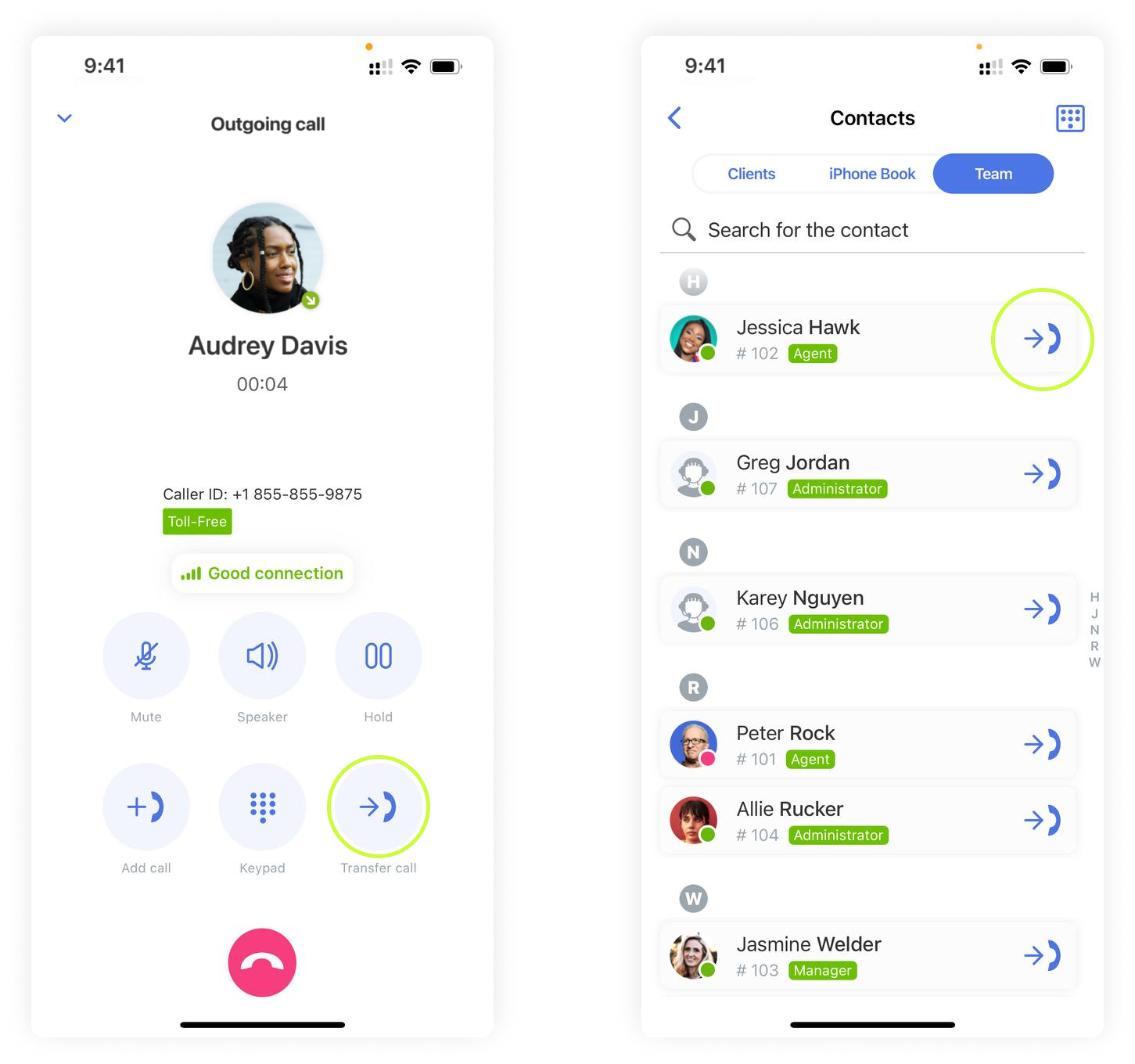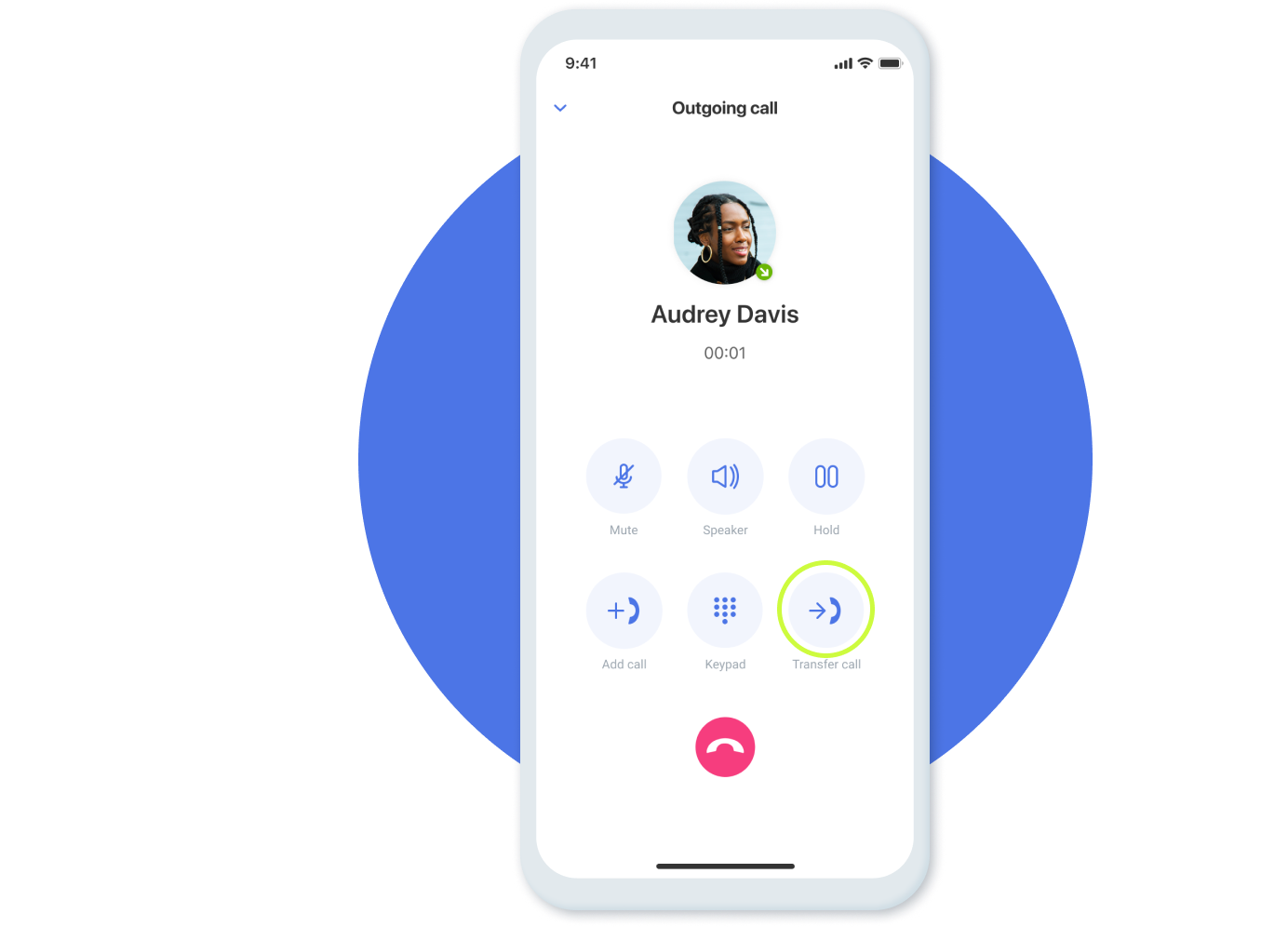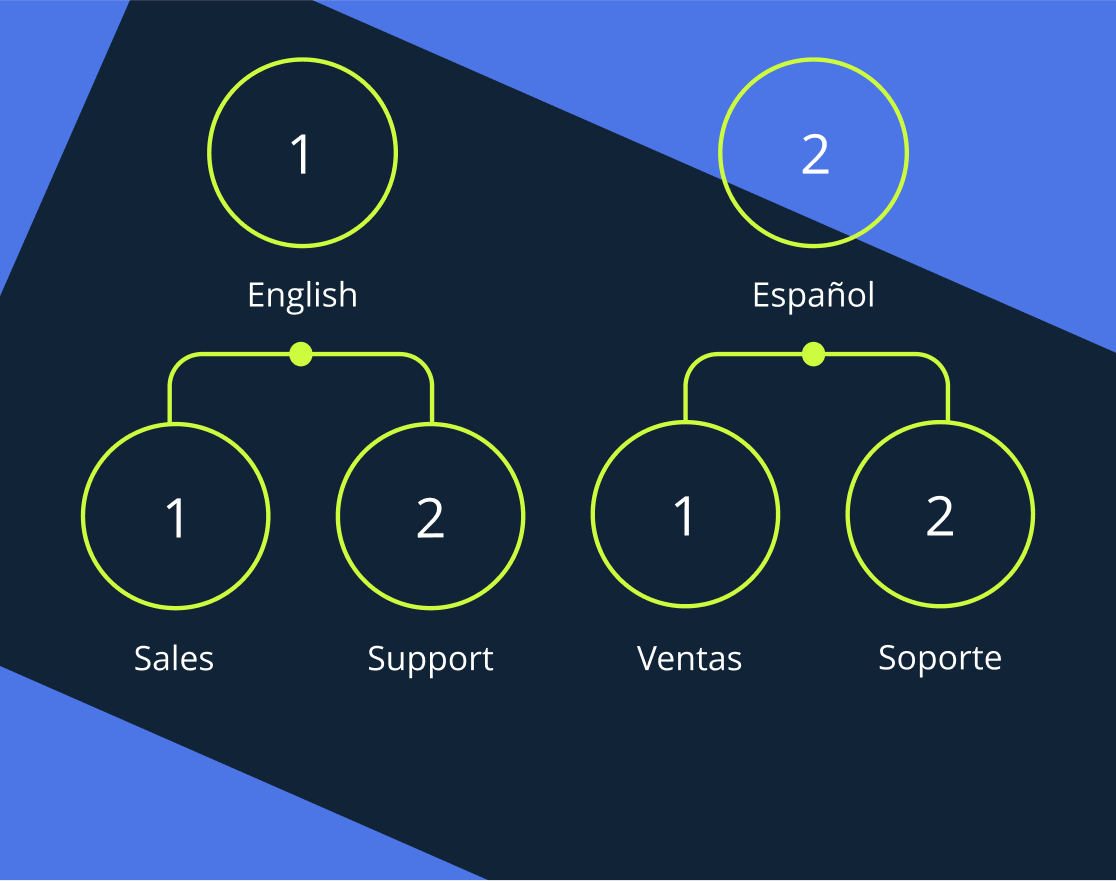Navigation:
What is a Cold Transfer?
A cold transfer is a call handling feature that allows a call center agent to transfer an incoming call to another agent, department, or external phone number without prior communication with the receiving party.
Benefits of Cold Transfer
Improved call handling efficiency
Cold transfers allow for quick and seamless call transfers, reducing call handling time and improving overall productivity.
Enhanced customer experience
Customers do not need to wait on hold while the transferring agent communicates with the receiving party, resulting in a smoother call experience.
Flexibility in call routing
Cold transfers allow agents to transfer calls to different departments or external numbers, enabling efficient call routing based on customer needs.
Communicate with more customers
The more people you speak to, the higher the chance for improving profit margins. And cold transfers let your employees speak to more callers.
Increase the likelihood customers don’t hang up
When your employees communicate with each other during a warm transfer, the caller is on hold – which means they might just give up if they’re impatient enough. But with cold transfers, no holding is necessary.
Cold Transfer Examples
So what is cold transferring? Here are some examples:
- Transferring a call from a customer service representative to a technical support agent to address a technical issue.
- Transferring a call from a sales representative to a billing department for a payment inquiry.
- Transferring a call from a receptionist to an external number, such as a mobile phone or voicemail, for after-hours support.
How to Do a Cold (Blind) Transfer?
- Click on the Call Transfer Transfer button
- Select the agent you want to transfer a call to.
- The call will be automatically transferred to another agent.

Best Ways to Handle Cold Transferring:
Here are some things to keep in mind when transferring calls:
- Ensure proper communication: Train agents to provide clear explanations to the caller about the transfer process and reasons for the transfer, if possible.
- Make sure your employees know how to use it: If people are getting their calls transferred incorrectly or, worse, dropped, they are going to be upset – and that can cost you business.
- Minimize hold time: If the receiving party is not available, use features such as voicemail or call queues to minimize hold time for the caller.
- Take advantage of IVR: By setting up an IVR, you can ensure that your employees have information they need ahead of time (or you can weed out callers by answering their questions via the IVR).
- Follow up on transferred calls: Encourage agents to follow up with the receiving party or the caller after a cold transfer to ensure the call is resolved satisfactorily.
While there are many ways to improve call transfers, if you keep these tips in mind, you’ll already be well on your way!
Other Call Transferring Options
Warm Transfers
As opposed to cold transfers, warm transfers are “warm” because you are letting the person know that a call is being transferred to them. This usually involves putting the caller on hold while you speak to the person you would like to transfer the call to, and ensures that they are ready to receive it.
Cold Transfers are Great for Call Centers
Cold transfers are a valuable call handling feature that allows call center agents to efficiently transfer calls without prior communication with the receiving party. By using MightyCall to leverage cold transfers, call centers can improve call handling efficiency, speed, and enhance the overall customer experience. Get calling today!





















